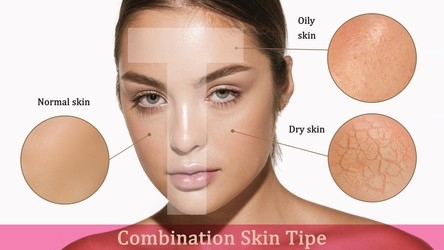Reduce Oily Face at Home
Dealing with an excessively oily face can be a daily struggle, affecting your confidence and comfort. The good news is that there are numerous methods and approaches you can adopt to reduce excess oil and achieve a balanced, shine-free complexion. This Reduce Oily Face at Home will provide you with valuable insights, skincare routines, and expert tips to help you on your journey to oily face reduction and radiant skin.
Your Path to Shine-Free Skin:
1. Clay (Bentonite or Kaolin Clay): Clay masks can help absorb excess oil and unclog pores.
DIY Mask: Mix 1-2 tablespoons of clay with enough water or rosewater to form a paste. Apply to your face, let it dry, and rinse off with warm water.
2. Apple Cider Vinegar: Contains acetic acid that can help balance skin pH and control oil.
DIY Toner: Mix equal parts of apple cider vinegar and water. Apply with a cotton ball as a toner after cleansing.
3. Honey: Has natural antibacterial properties and can help balance oil production.
DIY Cleanser: Mix a teaspoon of raw honey with water. Massage onto damp skin, then rinse thoroughly.
4. Green Tea: Contains antioxidants that can help regulate oil production.
DIY Toner: Brew green tea, let it cool, and use it as a toner or freeze it into ice cubes for a refreshing facial treat.
5. Lemon Juice: Contains citric acid that can help control excess oil.
DIY Toner: Dilute fresh lemon juice with water (1 part lemon juice to 3 parts water) and apply with a cotton ball.
6. Witch Hazel: Acts as a natural astringent to tighten pores and reduce oiliness.
DIY Toner: Apply witch hazel directly to your skin using a cotton pad after cleansing.
7. Aloe Vera Gel: Soothes and hydrates the skin without adding oil.
DIY Moisturizer: Apply a thin layer of pure aloe vera gel as a moisturizer.
8. Oatmeal: Can absorb excess oil and soothe irritated skin.
DIY Face Scrub: Mix ground oatmeal with water to create a paste. Gently massage onto damp skin, then rinse off.
9. Egg Whites: Can help tighten pores and reduce excess oil.
DIY Mask: Beat an egg white until frothy and apply a thin layer to your face. Let it dry, then rinse off.
10. Tomato: Contains natural astringents that can help control oil.
DIY Mask: Mash a ripe tomato and apply the pulp to your face. Leave it on for about 15 minutes, then rinse off.
Subscribe to our youtube channel Kitchenpedia for more delicious recipes and hit the like button if you enjoyed this video. Share it with your friends and Family.
1. Gentle Cleansing Routine
A gentle cleansing routine is essential for managing oily skin. Use a mild, oil-free cleanser to wash your face twice a day. Over-cleansing can strip your skin of natural oils, causing it to produce even more sebum.
2. Exfoliation
Regular exfoliation helps remove dead skin cells and unclog pores, preventing breakouts. Opt for chemical exfoliants like salicylic acid or glycolic acid, which are effective for oily skin.
3. Oil-Free Moisturization
Contrary to belief, oily skin needs moisturization. Choose oil-free, non-comedogenic moisturizers that hydrate without adding excess oil to your skin.
4. Balanced Diet and Hydration
A well-balanced diet rich in antioxidants, vitamins, and minerals can contribute to healthier skin. Drink plenty of water to keep your skin hydrated and help regulate oil production.
5. Use of Clay Masks
Clay masks, especially those with ingredients like kaolin or bentonite, can absorb excess oil and minimize the appearance of pores.
6. Avoid Harsh Products
Avoid harsh skincare products and astringents that can strip your skin. This can trigger the sebaceous glands to produce more oil as a defense mechanism.
7. Regular Sun Protection
Apply a non-comedogenic sunscreen daily to protect your skin from harmful UV rays. Look for products labeled “oil-free” or “matte finish.”
8. Makeup Tips
If you wear makeup, opt for oil-free and non-comedogenic products. Use a mattifying primer to create a smooth base and control excess shine.
Tips and Tricks For Reducing Oily Skin:
1. Use a Gentle Cleanser Twice a Day
Wash your face with a gentle, oil-free cleanser in the morning and evening. Avoid harsh cleansers, as they can strip your skin and trigger more oil production.
2. Exfoliate Regularly
Incorporate exfoliation into your routine to remove dead skin cells and unclog pores. Opt for chemical exfoliants with ingredients like salicylic acid to target oily skin.
3. Choose Oil-Free Moisturizers
Moisturizing is crucial for all skin types, including oily skin. Use oil-free, non-comedogenic moisturizers to hydrate without adding excess oil.
4. Blotting Papers on the Go
Carry blotting papers with you to quickly absorb excess oil throughout the day without disturbing your makeup.
5. Apply a Clay Mask Weekly
Using a clay mask once a week can help absorb excess oil, minimize pores, and give your skin a matte finish.
6. Avoid Touching Your Face
Touching your face transfers oils and dirt from your hands, which can exacerbate oiliness and lead to breakouts.
7. Stay Hydrated
Drinking water helps maintain skin hydration and balance oil production. Aim for at least eight glasses of water a day.
8. Use Oil-Free Sunscreen
Protect your skin from UV rays by using oil-free, non-comedogenic sunscreen. Look for products labeled “matte” or “oil-free.”
9. Choose Oil-Free Makeup Products
Opt for oil-free and non-comedogenic makeup products to prevent clogged pores and excess shine.
10. Balanced Diet and Stress Management
A well-balanced diet rich in fruits, vegetables, and whole grains can contribute to healthier skin. Managing stress can also help regulate oil production.
FAQS:
- Is it advisable to skip moisturizer if I have oily skin?
No, moisturizer is important for all skin types. Opt for oil-free, lightweight formulas to keep your skin balanced.
- Can diet impact oily skin?
Yes, a diet rich in greasy and sugary foods can exacerbate oil production. Incorporate fruits, vegetables, and whole grains into your meals.
- How often should I exfoliate my oily skin?
1-3 times a week is generally sufficient. Over-exfoliating can lead to irritation and increased oil production.
- Are there specific makeup brands for oily skin?
Many makeup brands offer products designed for oily skin. Look for terms like “matte,” “oil-free,” and “long-lasting.”
- Can stress worsen oily skin?
Yes, stress can trigger hormonal changes that contribute to increased oil production and breakouts.
- Are there natural remedies for oily skin?
Yes, ingredients like witch hazel, tea tree oil, and aloe vera can help regulate oil production and soothe the skin.
Conclusion:
Reduce Oily Face at Home, Remember to perform a patch test before using any new ingredient on your skin, especially if you have sensitive skin or are prone to allergies. Additionally, while these natural ingredients can be beneficial for managing oily skin, results may vary from person to person. If you experience persistent or severe skin issues, consider consulting a dermatologist for professional guidance.

